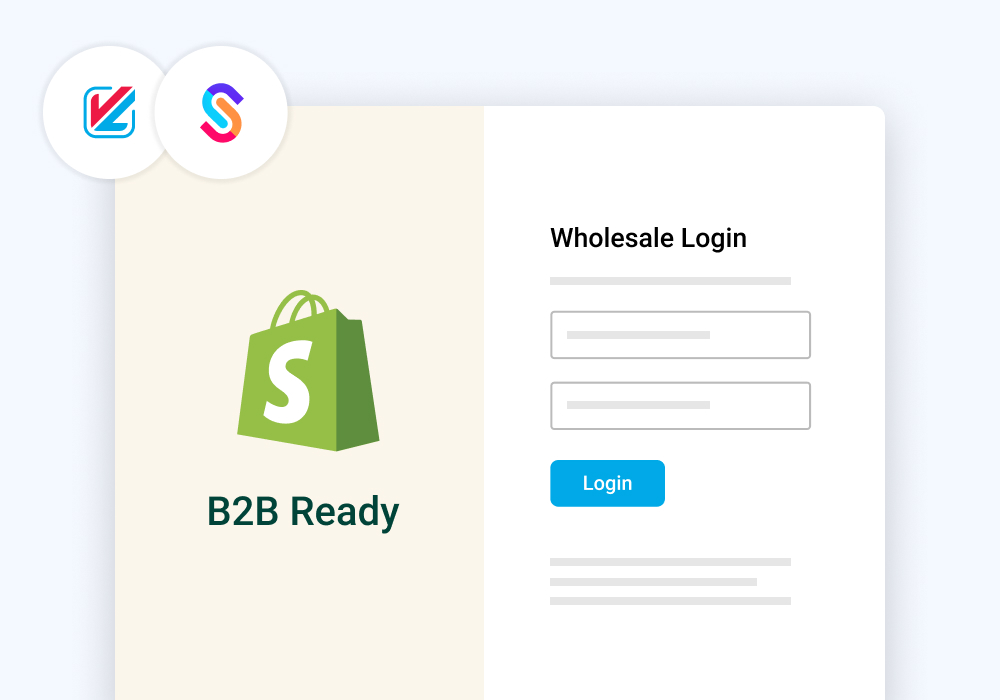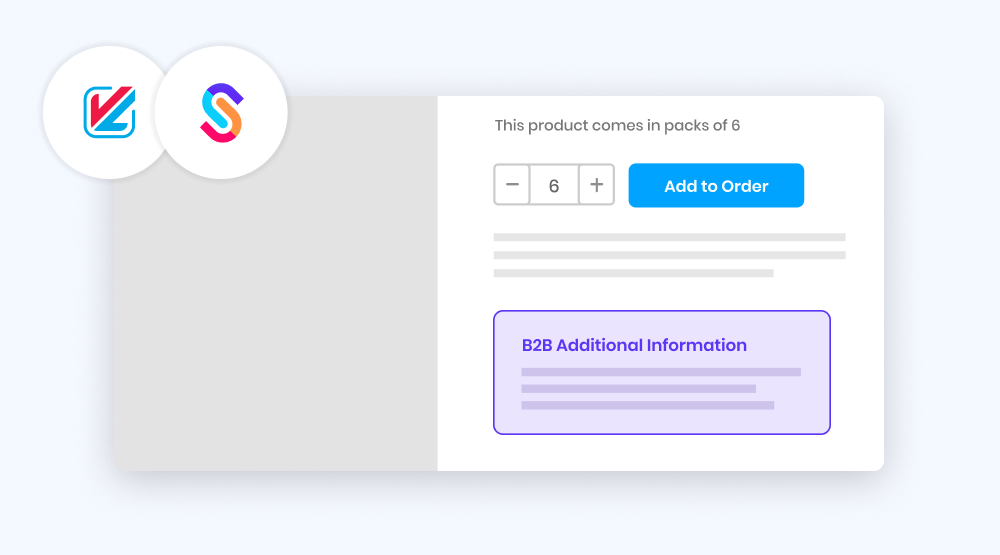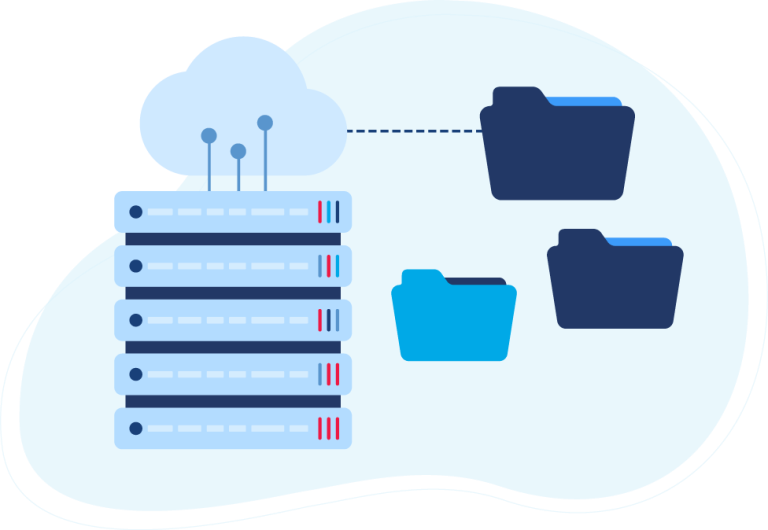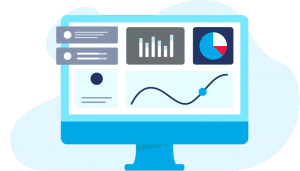Over recent years, Shopify has carved its name as the eCommerce platform of choice for merchants of all sizes across the globe. Its powerful feature-set, its ease of use, and its extensibility have made it the obvious choice for brands looking to grow fast. It really needs very little introduction!
DTC brands have seen incredible growth using the platform and Shopify themselves have seen their customer-base over double in the space of 2 years. This is all testament to the strength of the platform and the power Shopify unlocks for merchants.
One area that is ripe for acceleration is B2B eCommerce, with analysts forecasting the global B2B eCommerce market reaching $20 trillion by 2027. When evaluating the broader capabilities of Shopify as a B2B platform this is an area that is regularly overlooked. Can Shopify fulfill the often complex and heavily customized needs of B2B merchants and deliver a leading B2B customer experience? The short answer is yes!
In this post, we’re going to focus on the customer experience and walk through 4 practical ways the frontend of Shopify can be adapted for B2B:
– Creating a B2B login/registration process
– Adapting Shopify to show B2B pricing
– Displaying B2B content to customers
– Setting up B2B payment methods
Each of the above can vary in complexity (and some do require out-of-the-box thinking!) but we’ll aim to give some top-level guidance on potential ways to approach each of them. Let’s begin!
1. How to create a B2B login/registration process
When enabling B2B on your Shopify store, it’s typically necessary to require a customer to log in before being able to access their special pricing and ordering rules. Once logged in, they can then browse your full product catalog, begin creating B2B orders, manage their account, and more.

With Shopify, it’s possible to create a completely customized login experience that you can direct your B2B customers to before they get access. You may even want to consider ‘locking’ your B2B store until a customer signs in, preventing members of the public from being able to see products or B2B-only information.
No matter your approach, the implementation is relatively straightforward and requires adapting a number of the core files within your Shopify storefront to include special logic to handle this. In our guide here, we run through some examples of how this can be achieved and we’ve even included a live code sample on Shopify’s default theme, Dawn.
It’s also possible to use Shopify’s native functionality to offer a B2B customer registration form that allows you to moderate applications before granting them access. One common approach to achieve this is to use Shopify’s ‘contact form’ functionality that can be configured to notify specific members of your team of new applications. Once approved, the customer record can then simply be created within Shopify and then subsequently granted access to your B2B store. For more complex requirements, there are a range of ‘custom form builder’ apps within the Shopify app store that allow for more extensive customization.
2. Adapting Shopify to show B2B pricing
One of the current limitations with Shopify is around how pricing works and, right now, it’s not possible to create additional pricing (or price lists) within their system. The good news is there are a variety of ways you can achieve this that enable you to implement a robust way to handle your customer-specific B2B pricing.
If you have access to technical expertise within your operation, a common approach is to use Shopify’s metafield functionality that allows you to assign additional data to any product attribute, even at the variant level. If you were looking to set up different pricing structures, you would simply extend the metafields within your product catalog to store this additional information.
A typical approach would be to devise a naming structure (e.g. price_list1, price_list2), and then import these in bulk into your product catalog either through available Shopify import tools, or directly via your system integration (e.g. via an ERP). Whilst this approach works well for relatively straightforward setups, it can become unmanageable if your pricing structure becomes more complex or your product range is extremely large.
Another approach is to use an approved Shopify app to achieve customer-specific pricing. Many apps, behind the scenes, work in the way described above by utilizing Shopify’s metafields functionality and providing a user-interface to manage this. Others make use of Shopify’s line-item discount functionality to achieve B2B pricing which, all round, makes for a much tidier approach.
When evaluating ways to achieve your desired customer-specific B2B functionality, you also need to factor in the systems you have in place. If you already have an ERP or backend system that you use as your B2B pricing ‘source of truth’, you need to find a way that doesn’t create additional overhead or require extensive development maintenance going forward. Our own solution, SparkLayer, integrates tightly with iPaaS, VL OMNI, allowing you to continue to use your current systems to manage your B2B pricing.
3. Displaying B2B content to customers
One of Shopify’s strengths as a platform is how extensively you can customize the storefront. In the context of B2B, this means you can really tailor the experience for your B2B customers, making their experience more engaging and enjoyable. Two powerful ways to do this are leveraging ‘customer tags’ and ‘product metafields’ (also touched on in point 2 above).

If we break down the approach, it’s possible to hide and show content based on who the customer is. For example, for a certain B2B customer group you may want to show a special banner on a product page, for others you may want to hide it. Or perhaps for all B2B customers, you want to show detailed product technical information once they are signed in.
Providing you have access to Shopify expertise, the implementation is extremely straightforward. In our guide here, we’ve listed out some code samples that you can use that essentially allow you to show customer-specific content. If you’re looking to enhance your products with additional content (e.g. technical information), our product metafields example here gives you a handy starting point.
4. Setting up B2B payment methods
Our final example is creating B2B payment methods within Shopify. What do we mean by B2B payment methods? These are typically payment methods that don’t require payment upfront and follow different business processes and rules within your operation. The most common include payment methods such as ‘Net 30 days’, ‘Pay on Account’, ‘Pay on Invoice’, even ‘Request for Quote’.
Configuring B2B payment methods within Shopify is really easy and Shopify refer to these as ‘manual payment methods’. In their own guide here, you can simply add these within your Shopify dashboard and when the customer checks out, they’ll see them as options to choose from.
Where you can get really clever is varying the payment methods based on who the B2B customer is. For example, perhaps you want all brand new B2B customers to only have the option to pay upfront (i.e. by card payment), or maybe for some customers you want to allow them to choose from “Net 30 days” or “Payment on Account”. If you’re using Shopify Plus, it’s possible to adapt the checkout experience to hide/show payment methods based on a customer tag, allowing you to tailor the payment experience. With our own solution, SparkLayer, you’re able to do this on any Shopify plan, giving you a powerful way to create your own custom B2B payment experience.
So there you have it, 4 ways you can customize and adapt Shopify to deliver a B2B experience! Our guide above is by no means exhaustive and there are a multitude of ways you can further extend Shopify to meet your precise B2B requirements. If you’d like to learn more about how you can use Shopify for B2B, please feel free to get in touch and we’d be happy to chat!
Author: Chris Mattingly
Short Bio: Chris is the co-founder of B2B eCommerce solution, SparkLayer, and UK eCommerce agency, blubolt. For over 15 years, Chris and his team have been immersed in the world of B2B and B2C eCommerce, helping retailers grow faster and unlock their potential.
 D365 Business Central
D365 Business Central Netsuite
Netsuite



